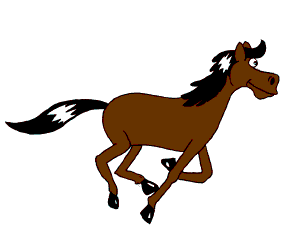
How animation works
¨ A biological phenomenon known as persistence of vision
¨ An object seen by human eye remains chemically mapped on the eye’s retina for a brief time after viewing
¨ A psychological phenomenon called phi.
¨ Human’s mind need to conceptually complete the perceived action i.e. translating the action
¨ Combination of these two (persistence of vision + phi) make it possible for a series of images that are changed very slightly and very rapidly, one after another, to seemingly blend together into a visual illusion of movement.
¨ The speed of the image changes is called the frame rate.
¨ Animation includes time varying positions (motion dynamics), shape, color, transparency, structure and texture of an object (update dynamics), and changes in lighting, camera position, orientation and focus.
Animation technique
Many techniques, including cel animation, stop motion and claymation.
-Animation made using these techniques can be captured one frame at a time using a camera
connected to a computer, instead of being recorded on film.
¨ Traditional animation, sometimes also called cel animation or hand-drawn animation, is the oldest and historically the most popular form of animation.
¨ Traditional animation began with each frame being painted and then filmed.
¨ Cel animation, developed by Bray and Hurd in the 1910s, sped up the process by using transparent overlays so that characters could be moved without the need to repaint the background for every frame.
¨ Computer animation has advanced rapidly, and is now approaching the point where movies can be created with characters so lifelike as to be hard to distinguish from real actors.
Vector Animation in flash
An animation being created in Flash is organized using a timeline. The vector objects used in the animation are created on the stage, using conventional vector drawing tools and techniques. Graphical objects can be stored in a library as symbols. Instances of symbols can be created on the stage, allowing objects to be reused. Instances can be transformed independently and have different visual effects applied to them.
There are three sorts of symbol in Flash. Graphic symbols are reusable vector objects. Movie clip symbols are self-contained animations with their own timelines, that play within the main movie and can be controlled by scripts. Button symbols have now been superseded by UI components.
Motion Graphic
Motion graphics is animated graphic design. After Effects is the leading desktop application for creating motion graphics, and offers the most sophisticated controls. Simple motion graphics can be achieved by repositioning and altering other properties of the layers of a bitmapped image independently. Interpolation may be used to control the rate of change of properties as well as their values.
Delivering animation
-The three predominant formats for delivering digital animation are animated GIF, Flash (SWF) and video.
-Flash is superior for vector animations.
For bitmapped animations, animated GIF may be used without a plug-in, but video provides the best quality.
-Flash should be used for interactive animation requiring scripting.
-The Flash movie file format is a compressed binary format that provides an efficient way to deliver animation over a network.
-Alternative formats for animation include APNG, JPEG sequences displayed by JavaScript, scripted SVG and canvas animation. These formats are rarely used.
Example of animation:
Example of animation:



1 comments:
interesting and got a lot of info...tq
Post a Comment